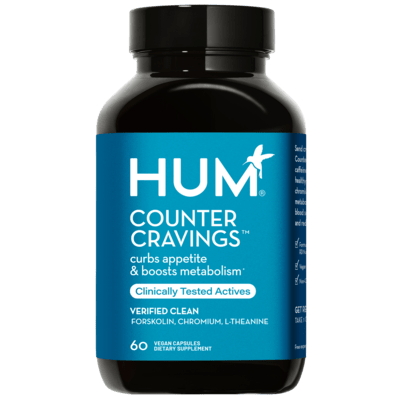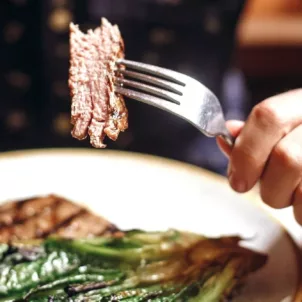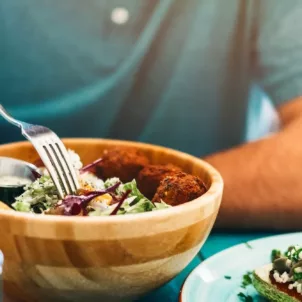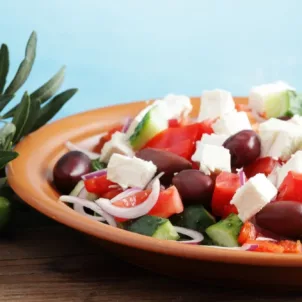Fad diets come and go—and most often, it’s for the best. (We’re looking at you, Master Cleanse!) But thankfully, there’s been a recent influx of popular diets that focus on nutrition—rather than restriction—for weight loss. One of the newest on the scene is the satiating diet.
Stave off hanger while still eating some of my favorite foods? I had to see what this one’s all about.






What is the satiating diet?
True to its name, the satiating diet focuses on healthy food groups that promote feelings of fullness. Furthermore, the key foods also have properties that can help:- boost metabolism
- reduce body fat
- lower blood sugar.
research behind the satiating diet
Researchers at Laval University in Quebec conducted a study in 2017 that tracked weight loss and feelings of fullness in significantly overweight men. The first group followed the satiating diet. The meal breakdown includes:- 20 to 25 percent of calories from protein
- 30 to 35 percent from fat (aka lipids)
- 45 to 50 percent from carbs
- 10 to 15 percent of calories from protein
- 30 percent from fat
- 55 to 60 percent from carbs
- greater weight loss
- decreased fat mass
- higher satiety
- better adherence to their regimen.
Satiating diet food list
Your satiating diet menu plan must include the foods and daily portions outlined below. Here’s why they’re important and how they’ll help you successfully lose weight.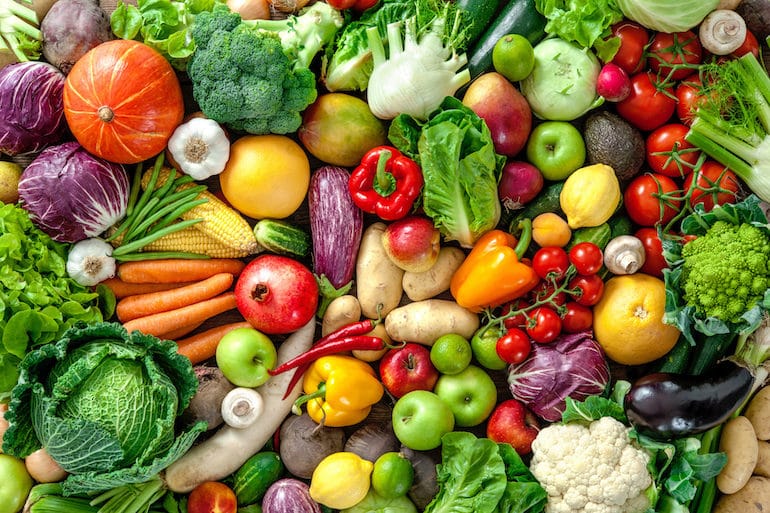
Whole fruits and veggies: 4+ servings each
The merits of enriching your diet with fruits and veggies are endless. First, of course, you get a healthy dose of key vitamins, minerals, and antioxidants. Next, eating a variety of plants promotes gut diversity, which supports your microbiome for optimal health. As far as weight loss goes, a 2004 study found that middle-aged women who maximized their fruit and veggie intake the most had a 28 percent lower chance of major weight gain. Then, in terms of body fat, studies suggest that people who follow plant-based diets benefit from lower BMIs (body mass index).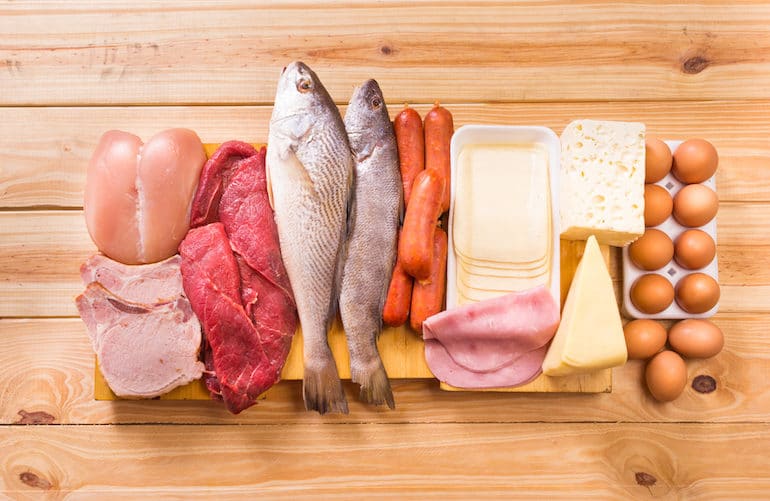
Lean protein: 4 servings
The satiating diet advises that each meal should include lean protein. If you can’t meet the four-serving quota in your meals, it can carry over to snacks. Healthy protein sources include:- fish
- eggs
- tofu
- lean poultry + meat.
- two percent for yogurt
- one percent for milk
- 20 percent for cheese
- weight loss
- body mass loss
- a smaller waist size
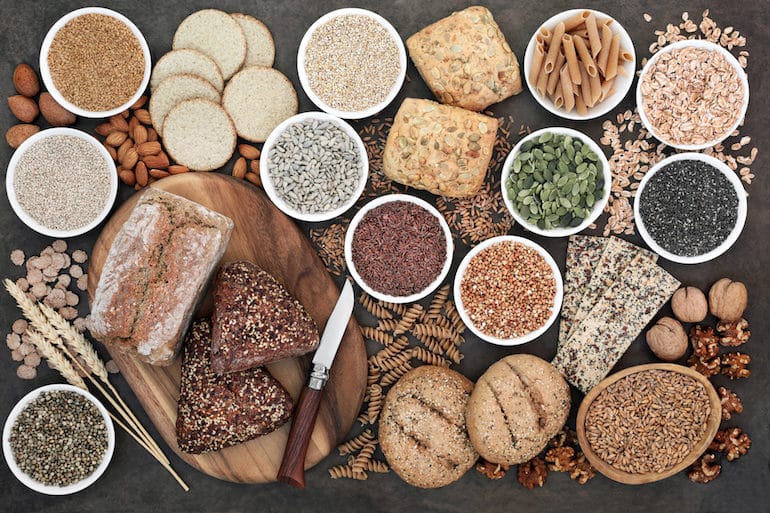
High-fiber whole grains: 5 servings
The satiating diet prizes whole grains that have at least four grams of fiber per serving. It should come as great news to carb lovers, as whole-grain bread and whole-wheat pasta are approved satiating foods on this diet plan. Other high-fiber, whole-grain sources include oatmeal and brown rice. The best of the bunch, however, is chia seeds, with a whopping 5.5 grams of fiber per tablespoon. One 2019 study found that diets rich in whole grains can reduce body weight as well as low-grade inflammation. Another 2017 study found that substituting refined grains for whole grains induces calorie loss and speeds up metabolism.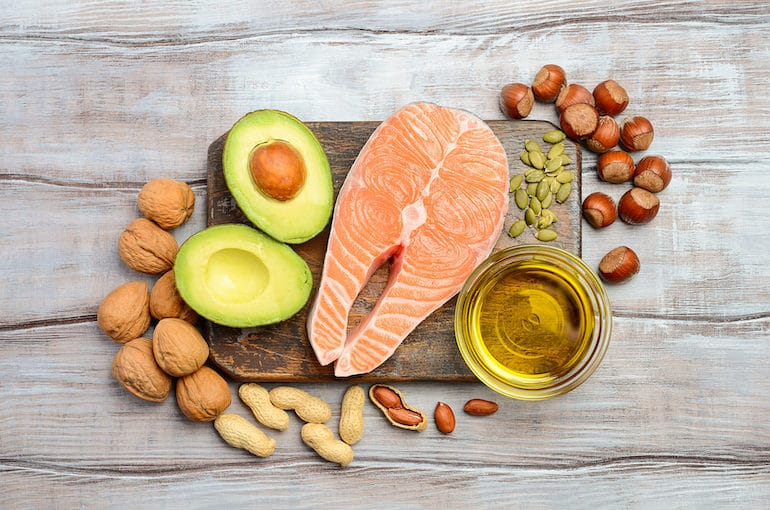
Plant-based and healthy fats: in moderation/from other food groups
Healthy fats are among the most satiating foods of any diet. As far as healthy fats go, aim for monounsaturated fatty acids (MUFA) and polyunsaturated fatty acids (PUFA). MUFA food choices include:- nuts
- avocados
- olive oil
- fish (salmon, albacore tuna, trout)
- walnuts
- flaxseed oil
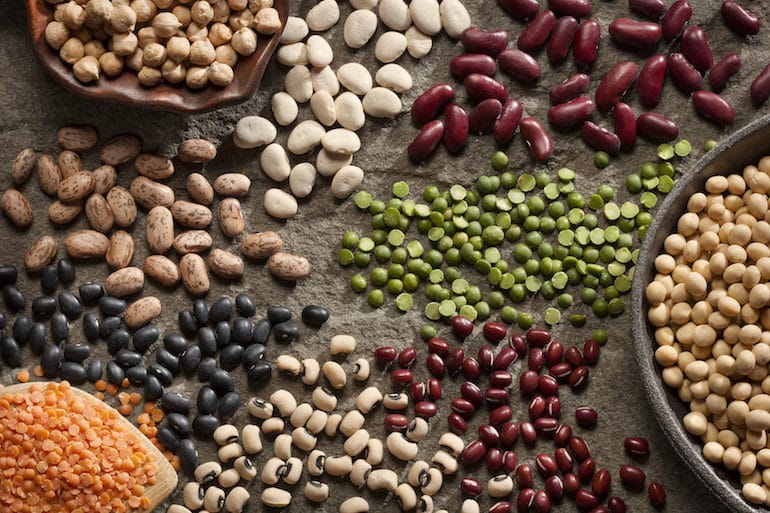
Legumes: 1 meal weekly
Another staple of the satiating diet is one legume-based meal per week. Legumes include varieties of lentils, beans, and peas. This category of satiating foods does double duty, as most legumes are rich in both plant-based protein and fiber. A 2008 review confirmed that when paired with whole grains, legumes can help mitigate weight gain. Get your weekly fix by eating hummus with a whole-wheat pita or making good, old-fashioned beans with brown rice.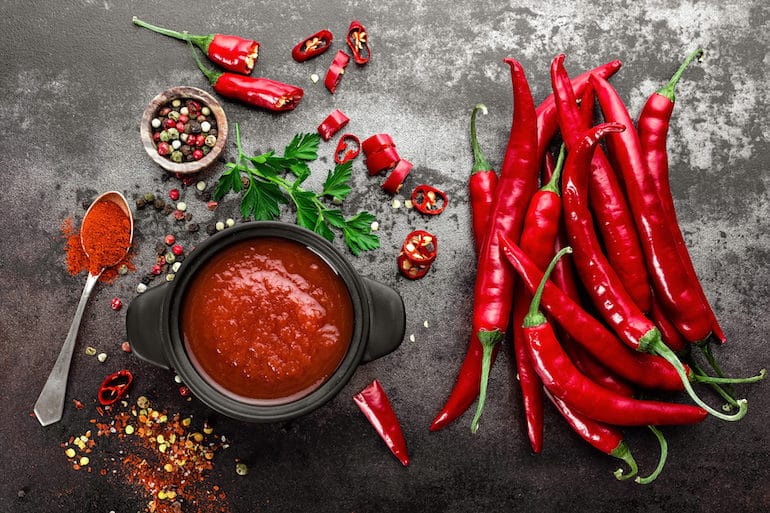
hot peppers: AS much as you can handle
Finally, here comes the hot take. (Pardon the pun once more.) The inclusion of hot peppers and spicy sauces may come as a surprising element of the satiating diet plan. However, research shows that capsaicin—the active substance in hot peppers—facilitates weight loss. Meanwhile, another study found that eating hot red pepper helps decrease appetite. Unfortunately for those with more mild palates, bell peppers don’t make the cut. But I for one will confidently continue to spice up my life with pickled jalapeños, chipotle salsa, and Sriracha galore.More like this
